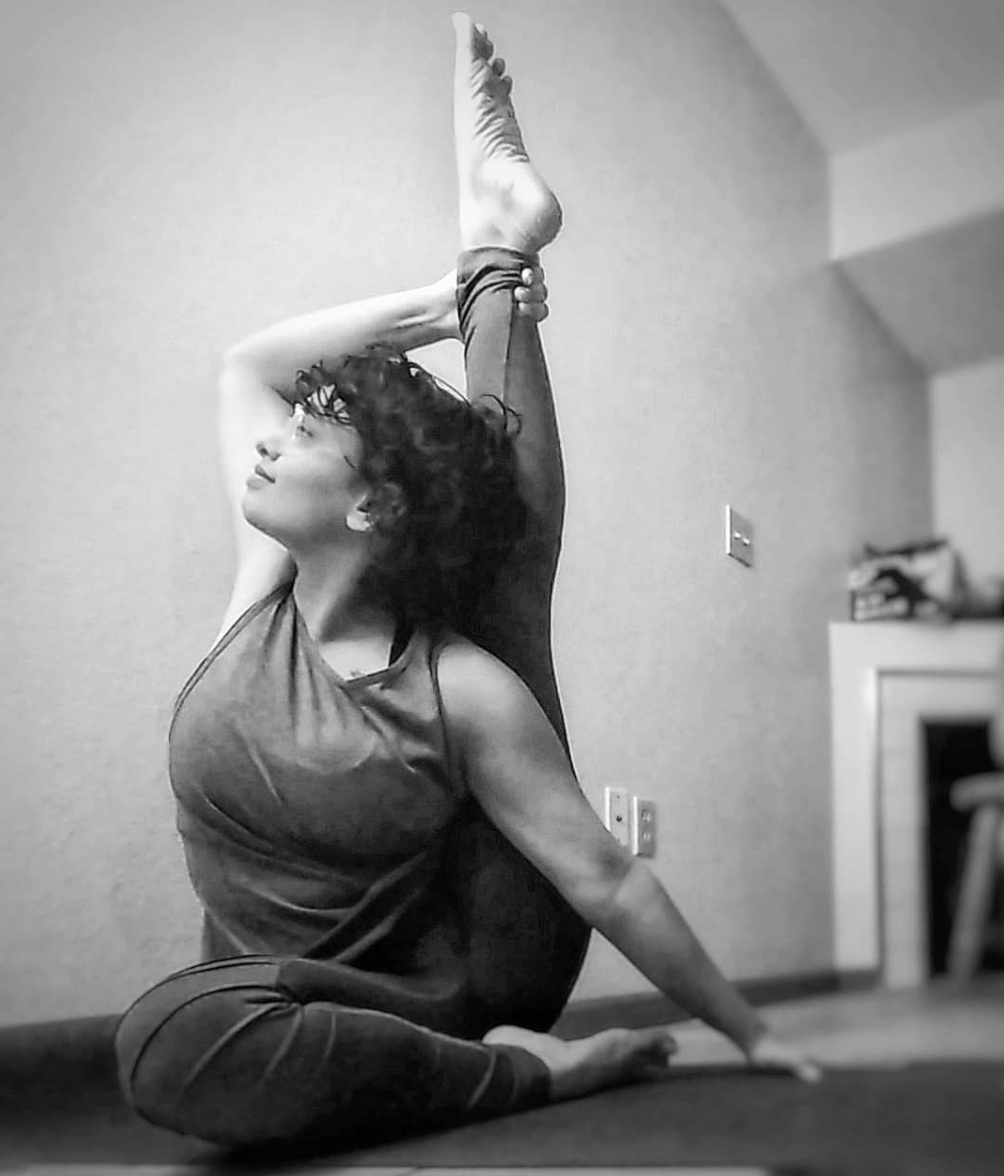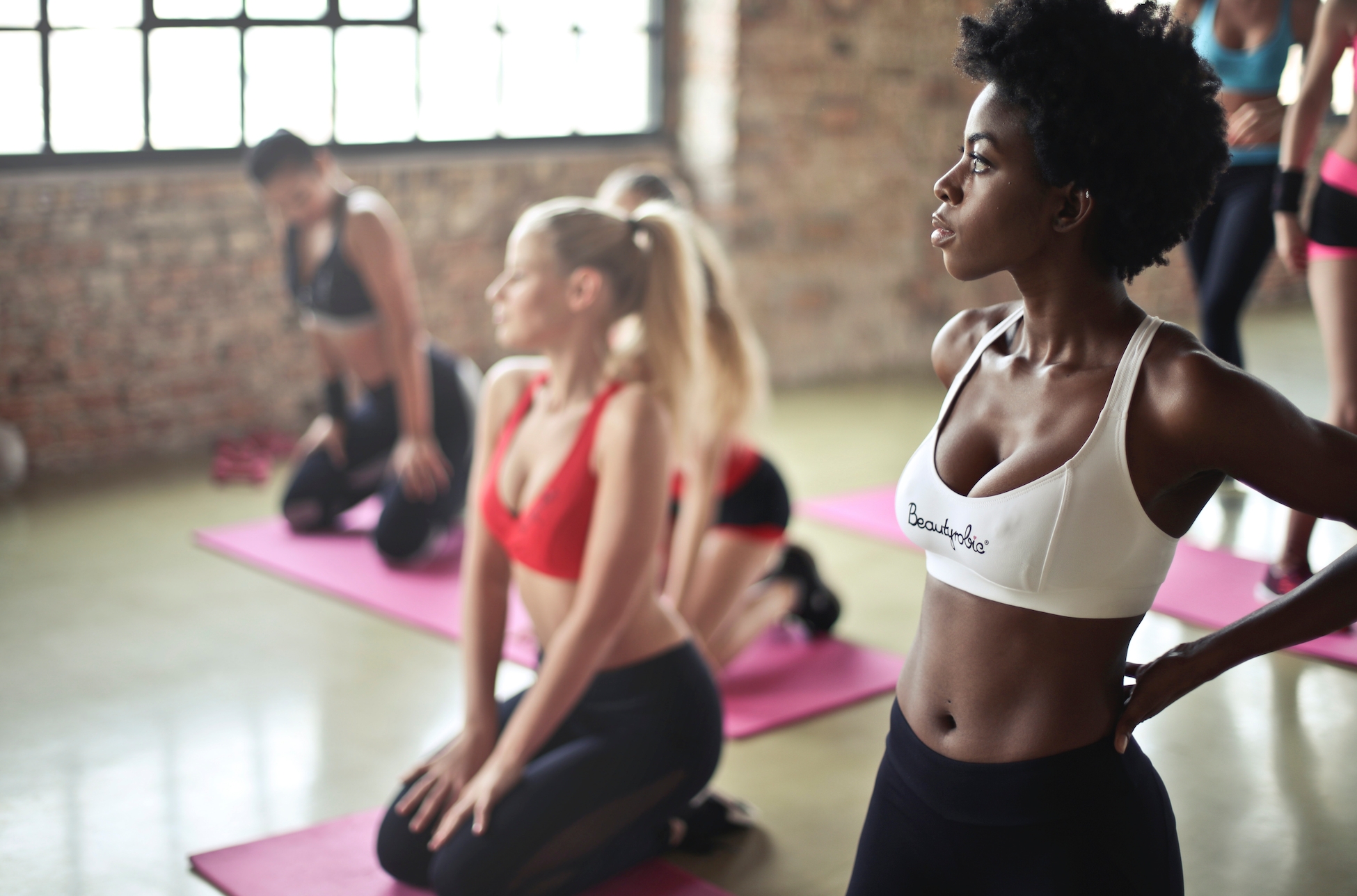
In 2009, the now-retired runner Usain Bolt ran the 100 meters in 9.58 seconds, blowing away the previous world record (which he owned, having set it twice in 2008). His sprint stunned and delighted the world. To see a fellow human being use his body in such an extraordinary way was nothing short of inspiring. I wish I could do that, millions of people said from their couches, waiting for their partners to bring the popcorn seasoning back from the kitchen.
While none of us are Usain Bolt, we can adapt our bodies and push them further than ever before, thanks to technological advancements in health and wellness. Some of these are forward-looking innovations; straight up Jetsons-meets-Minority Report stuff. But scientists are also discovering that you don’t always have to look to the future, sometimes the answers are hidden in the past.
Pranayama breathing & all things yoga

Earlier this year, Scientific American published a story about something called “cardiac coherence breathing” wherein you inhale, hold your breath, then exhale slowly. This exercise aides with relaxation, relieves anxiety and insomnia, and even lowers blood pressure and stress. Using biofeedback devices to track bodily metrics (including heart rate), scientists found a connection between controlled breathing and better mental and physical health.
The thing is, though, this is an ancient technique from India, where one of the core principles of yoga is prana (life or life force in Sanskrit). We take in and let out prana through breath. Anyone who has ever done yoga has certainly heard the word pranayama before, which means breath control. Pranayama, in other words, is a breathing exercise meant to help control what comes in and goes out of your body; yogis have long known that it helps refocus, recenter the body, reduce anxiety, and even relax the nervous system. For what it’s worth, many Indians let Scientific American know that what they wrote was basically just repackaged yoga for science fans.
Though SA kind of boffed the delivery, the very heart of the news is important: science is confirming what many have long known: yoga is good for mind, body, and soul in myriad ways. Beyond pranayama, practicing yoga itself has been confirmed to have numerous health benefits including the aforementioned reductions of stress and anxiety. But more than that, practicing yoga can improve your cardiac health, has been indicated in studies that it may help fight chronic pain, and can even help alleviate depression.
With the number of Americans practicing yoga having jumped 50 percent from 2012 to 2016, tapping into this thousands-of-years-old science is one of the many ways our bodies are walking into the future.
Meditation & mindfulness

You’re not imagining it: anxiety and depression are on the rise in the U.S.. In a 2018 American Psychiatry Association survey, nearly 40 percent of respondents said they’re more anxious now than they were a year ago—a marked jump from the same survey the previous year. That spike means that our nation’s “anxiety score” is now a 51 out of 100, the highest it’s ever been.
For some people, managing anxiety means taking pharmaceuticals. But it’s also possible to look to the past to find anxiety-reducing methods that don’t require a prescription. And when we say the past, we mean a long time ago—but not in a galaxy far, far away.
Evidence of meditation dates at least as far back as recently uncovered Indus Valley wall art, which depicts meditating figures. Those figures are from “approximately 5,000 to 3,500 B.C.E.” according to Psychology Today, which means human beings have been meditating for at least that long (and probably much, much longer). Meditation and mindfulness are practiced in every major religion today, whether those religions use the word “meditation” or not. And there’s a reason for that.
Because it really works, and science is showing us how—and how to best capitalize on what we know.
Beyond reducing anxiety, meditation and mindfulness have been shown to enhance life itself. According to meditator and scientist John Yates, “the ultimate goal is a profound cognitive shift to a more accurate perception of one’s self and one’s relationship to the world. This cognitive shift, is traditionally known as “liberation,” “enlightenment,” or “awakening” (the latter being my preferred term), which in turn, produces a dramatic and persistent increase in well-being.”
According to the Harvard Gazette, meditation has been shown to have “benefits against an array of conditions both physical and mental, including irritable bowel syndrome, fibromyalgia, psoriasis, anxiety, depression, and post-traumatic stress disorder.” That means a mindfulness practice can have very real physical results.
So while we witness huge advances in modern medicine, we can also advance our own well-being in a significant way by practicing one of the oldest arts in the world.
Food as medicine

Growing up in the U.S., whenever I got sick, it was time for the pink stuff. The bubblegum-tasting medicine I’d gleefully chug in order to get rid of whatever ailment I had that week. I later found out it was penicillin, though I couldn’t have cared less. The discovery of penicillin in the 1920s was perhaps one of the most important discoveries in the world. Thanks to Alexander Fleming, a little piece of mold “changed the course of medicine forever.”
Back then, that was the closest I got to the idea that food is medicine. But things have changed in recent years. The food-as-medicine movement is growing in the U.S., and for good reason. Per NPR, “it’s making inroads as physicians and medical institutions make food a formal part of treatment, rather than relying solely on medications.” The concept is simple: feeding your body foods in a way suited to your health needs, whether you just want to have enough energy to get through the day, would like to train for a strenuous athletic undertaking, or are sick and want to manage your illness.
This movement, which NPR describes as “decades-old” is actually more like millennia old. With roots in traditional Chinese medicine (whose written record dates back to the third century B.C.E.) and ayurveda (Hindu medicine), using certain foods to treat certain ailments (or, hell, just get certain results) is a tale as old as time. But it’s just now, you guessed it, being studied by western scientists. There’s even an entire program for student doctors that is dedicated to “lifestyle medicine” or using food to manage your life. Researchers have studied fatty fish‘s anti-inflammatory benefits, turmeric‘s ability to help alleviate pain, and more.
It’s not just traditional food that’s being studied. Take bear bile, for example: long thought in traditional Chinese medicine to aid the liver and the heart. Often used to tackle inflammation, fever, and other symptoms related to the liver, gallbladder, and the heart, patients ingest bear bile at the behest of their physicians. If this sounds a little off to you, your radar is wonky, because studies have shown the efficacy of using bear bile for certain liver and heart-related diseases. (Plus, because the ethics surrounding bear bile are so dicey, several researchers have created synthetic bear bile that acts in the same manner as the real thing.)
Tracking health metrics

All this said, not everything about creating the body of the future comes from the past. Some of this stuff is straight out of a sci-fi novel.
Just take a look at the way technology is transforming exercise, and you’ll start to get a better idea of how the body of the future is being shaped. Personal trainers at the touch of a button, augmented reality exercise classes, technology that prevents injuries better than ever before. But what is perhaps most exciting about the future of our bodies is how technology can and will help us look after them.
Whether it’s via machine-learning algorithms that can diagnose diseases (like a Google algorithm that has diagnosed “diabetic retinopathy in images at a level of accuracy likened to that of board-certified ophthalmologists”) or using Apple Watch’s heart-rate sensor to detect abnormal heartbeat patterns and warn users of potentially life-threatening heart conditions, our bodies are more closely monitored than ever.
Using data, farmed thanks to ultra-modern technology, to support the work you do—making sure your heart rate is on target and you’re working as hard as you think you are, tracking energy level along with your diet—will only enhance the experience of tapping into the past.
****
Of course, modern technology goes hand-in-hand with this age-old knowledge in order to create a perfect storm of stronger, better bodies. Maybe we can’t all be Usain Bolt, but we can be better versions of ourselves.
